Introduction
Chatbots and texting are transforming how businesses communicate. Integrating these tools takes customer engagement to the next level and increases lead conversion rates.
And one of the efficient ways to acquire lead conversation is BotPenguin and Twilio integration.
BotPenguin and Twilio integration allows businesses to automate conversations, personalize interactions, and optimize lead conversion strategies effectively.
This integration boosts efficiency to handle more leads with less effort. Further delivering individualized experiences that convert prospects into loyal buyers.
Read this post to learn how BotPenguin and Twilio work together to captivate leads. Discover real examples of companies providing 24/7 support and sending personalized messages.
See step-by-step instructions for setting up the integration yourself.
Take your customer service and sales to the next level. Seamless communication, anytime, anywhere. Don't let tools work in silos.
So continue reading to know more about BotPenguin and Twilio integration.
What are BotPenguin and Twilio?
In the following sections, we will explore the benefits of these chatbot integration and how it can supercharge your lead conversions.
An Overview of BotPenguin as a Chatbot Platform
BotPenguin is a comprehensive chatbot platform that enables businesses to create and deploy intelligent chatbots for various customer-facing interactions.
Chatbots are computer programs designed to simulate human conversation, providing automated responses to customer inquiries and engaging in interactive dialogues.
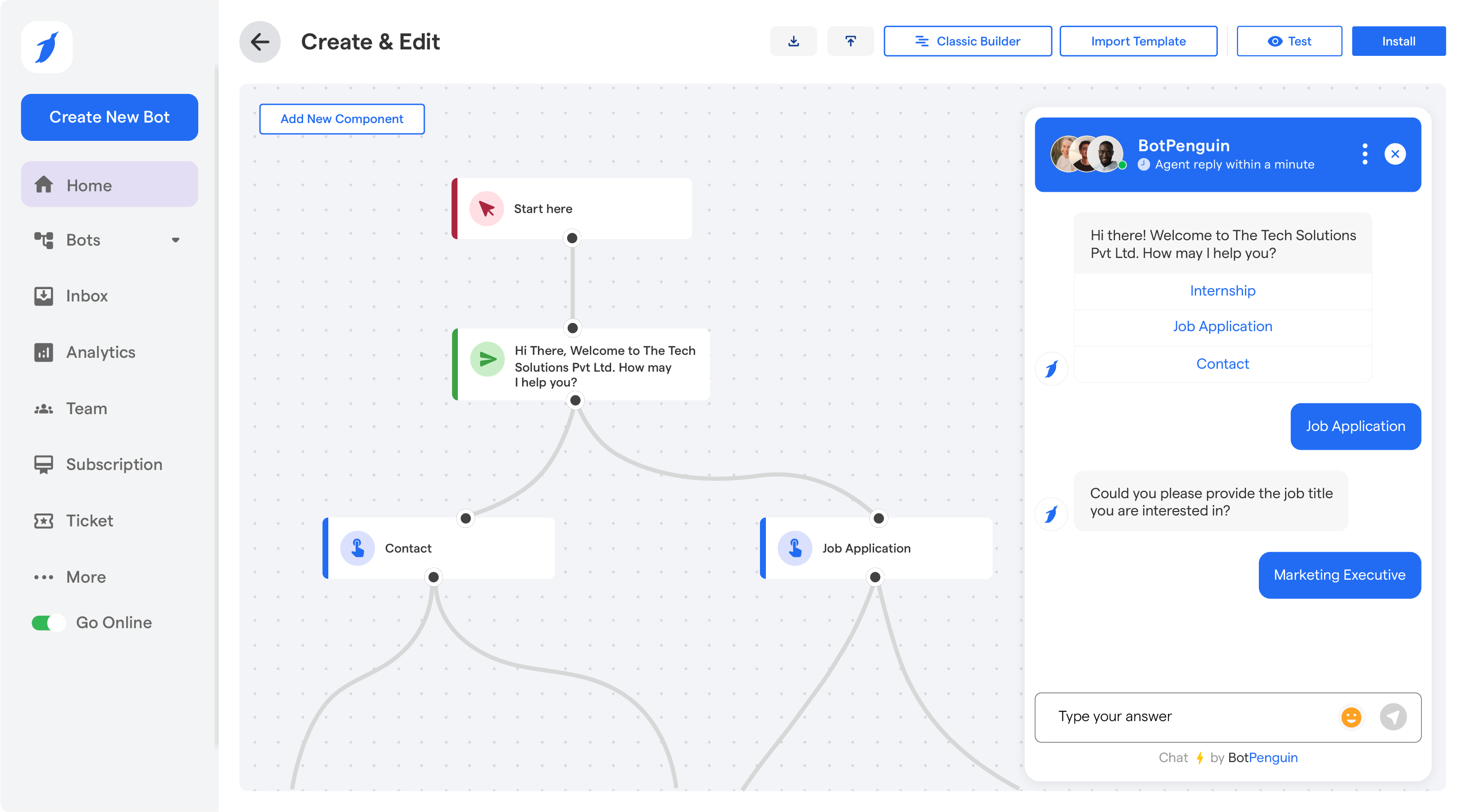
BotPenguin offers a user-friendly interface and powerful AI capabilities to create chatbots that can handle various tasks, such as answering customer queries, providing product recommendations, and assisting with transactions.
The key features of BotPenguin include natural language processing (NLP) technology, which allows the chatbot to understand and interpret user input conversationally.
This capability enables more interactive and personalized conversations, improving the customer experience.
BotPenguin also provides customizable chatbot templates, drag-and-drop functionality for easy bot creation, and analytics to track performance and optimize the chatbot's effectiveness.
An Overview of Twilio as a Communication Platform
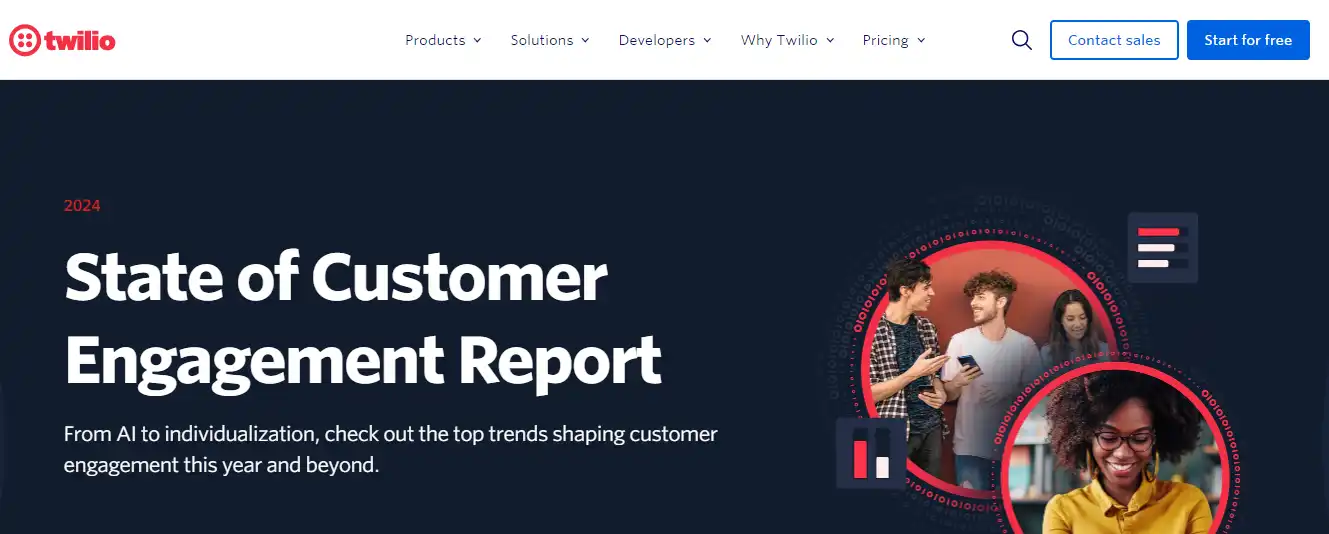
On the other hand, Twilio is a communication platform that provides various tools and APIs to facilitate communication between businesses and their customers.
It offers SMS messaging, voice calls, video calls, and even programmable fax. Twilio's infrastructure allows businesses to integrate and automate communication channels into their existing systems, applications, and workflows.
Key Features and Advantages of Using these Tools Separately
Using BotPenguin and Twilio integration separately brings unique advantages to businesses.
BotPenguin allows for creation of interactive and intelligent chatbots that efficiently handle a high volume of customer inquiries.
This reduces the burden on support teams and provides instant responses to customer queries, enhancing customer satisfaction and engagement.
Twilio, on the other hand, empowers businesses to communicate with customers through various channels, meeting their preferences and ensuring convenient interactions.
It improves accessibility, allows personalized communication, and enables businesses to scale their communication efforts as they grow.
Next, we will see the power of BotPenguin-Twilio Integration.
The Power of BotPenguin and Twilio Integration
By integrating BotPenguin's intelligent chatbots with Twilio's communication capabilities, businesses can provide personalized and automated interactions with their leads and customers.
This automation saves time and resources by allowing chatbots to handle repetitive tasks and provide instant responses, ensuring prompt and consistent communication.
This speed and efficiency in customer interactions can greatly impact lead conversions. As prompt responses and personalized engagement help build trust and create a positive experience for potential customers.
How Integration Improves Customer Experience and Engagement
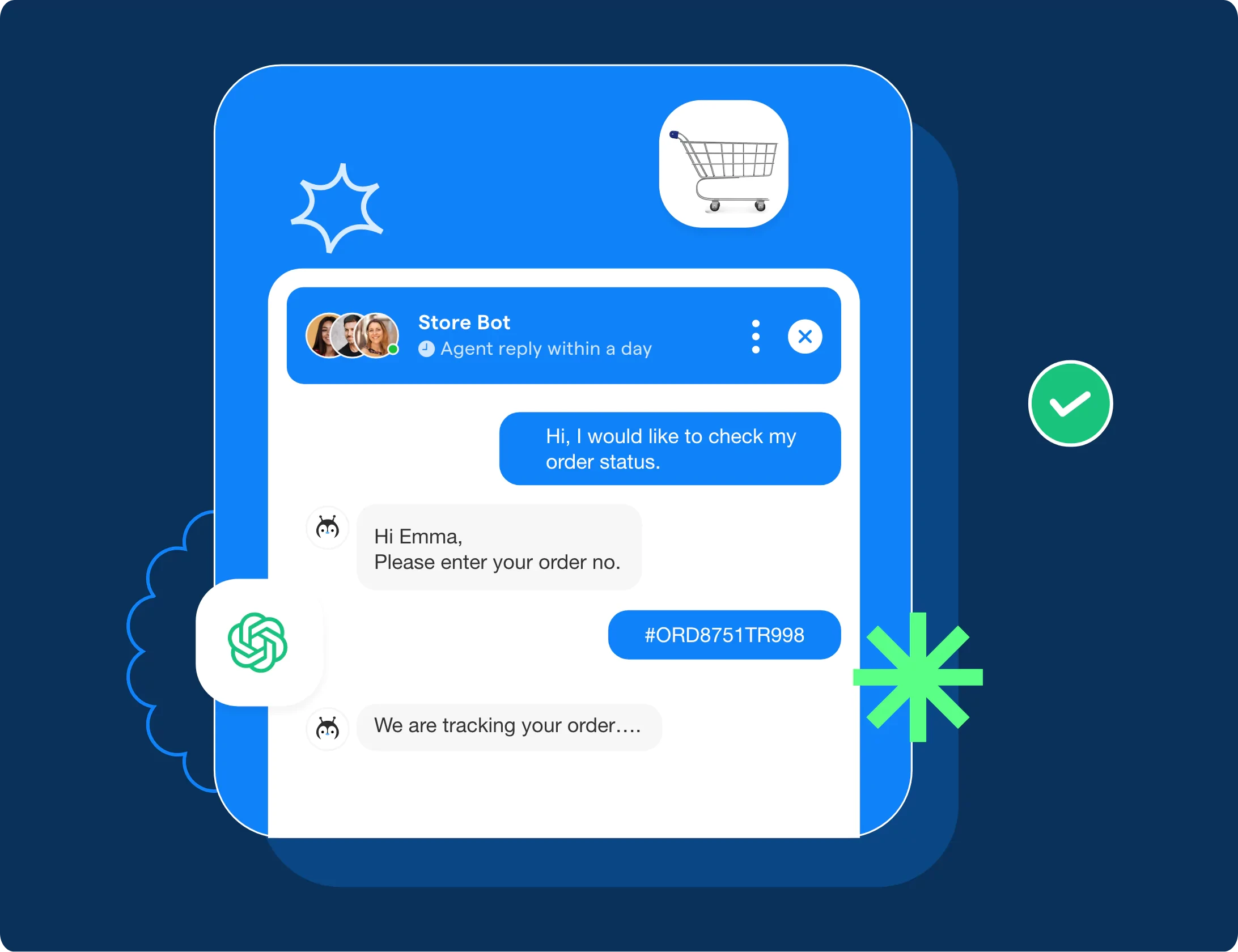
Moreover, Chatbot integration between BotPenguin-Twilio Integration improves the customer experience and engagement by offering omni channel communication.
With Twilio's capabilities, businesses can reach customers through multiple channels, such as SMS, voice calls, or even video calls, giving customers the flexibility to choose their preferred mode of communication.
This seamless multi channel experience increases customer satisfaction and engagement, allowing them to interact with the business conveniently in their preferred way.
Examples of Businesses that have Successfully Implemented the Integration
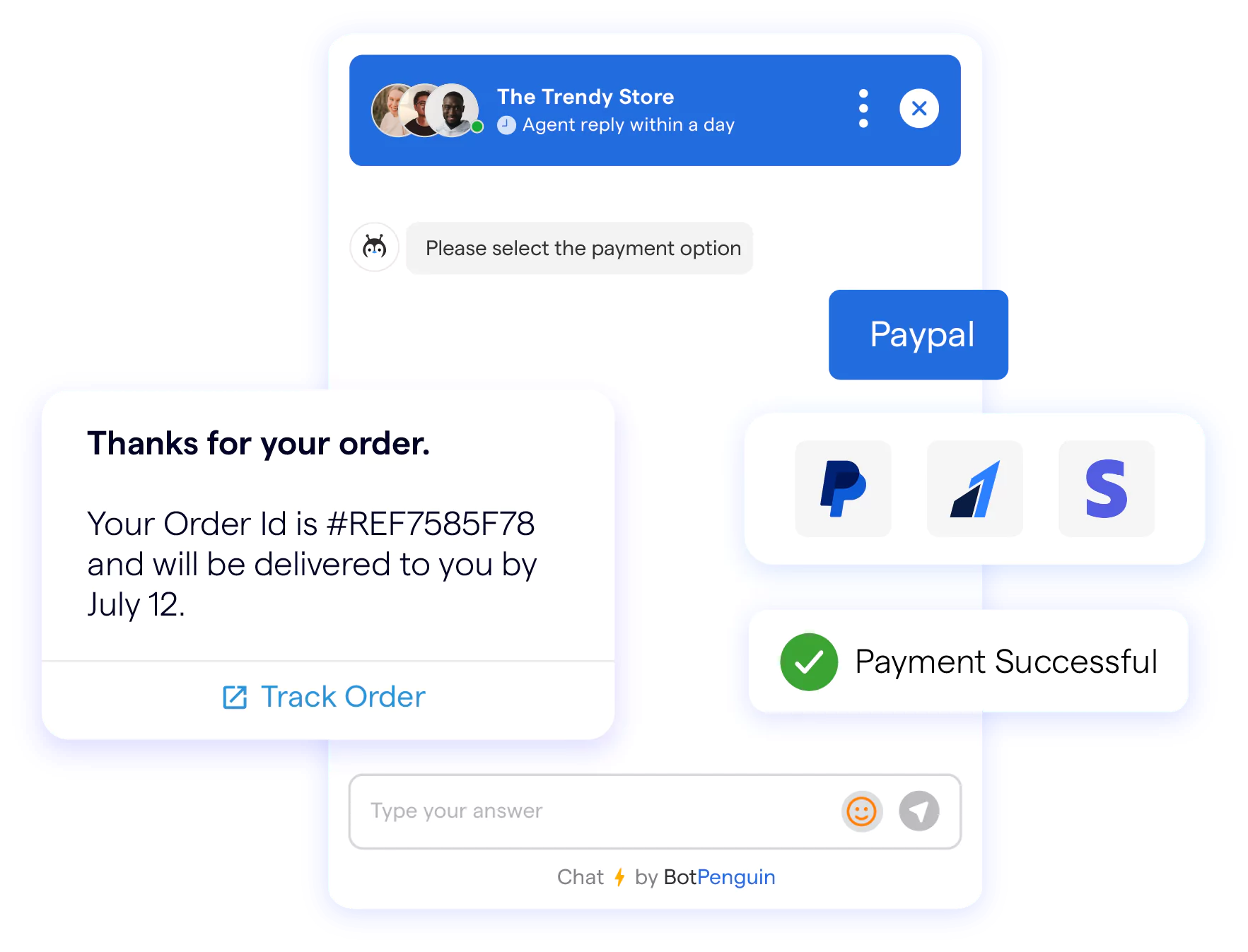
Several businesses have successfully BotPenguin-Twilio Integration to enhance lead conversions and improve customer engagement.
For example, an e-commerce company integrated the two platforms to deploy chatbots on their website that could provide real-time responses to customer queries and send automated order updates via Twilio's SMS messaging.
This integration saved the company valuable time and resources, improved customer service, and ultimately increased sales and customer satisfaction.
Another example is a travel agency that integrated BotPenguin with Twilio to automate booking confirmations and send personalized travel notifications to its customers.
By automating these communication processes, the agency improved customer engagement, reduced human error, and ensured a smooth customer experience throughout the travel journey.
This BotPenguin-Twilio Integration integration helped the agency generate more leads through referrals and repeat business due to the enhanced customer experience.
Benefits of BotPenguin-Twilio Integration
The benefits of BotPenguin and Twilio integration are the following:
Personalized Conversations and 24/7 Customer Support
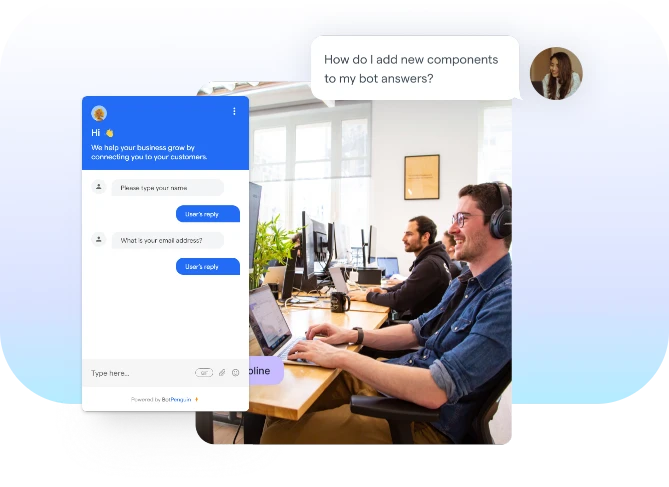
Additionally, the integration allows for 24/7 customer support. With chatbots powered by BotPenguin, businesses can provide round-the-clock assistance to leads and customers, ensuring prompt responses and support at any time of the day.
This availability improves customer satisfaction and helps capture leads that may have otherwise abandoned the conversion process due to the lack of immediate support.
The Automation Capabilities and Efficiency
The automation capabilities of the BotPenguin-Twilio integration are another major advantage. Chatbots powered by BotPenguin can automate various tasks, such as lead qualification, appointment scheduling, order tracking, and more.
Automating these processes allows businesses to streamline their workflows, save time, and maximize efficiency.
The chatbot integration with Twilio allows for automated communication through SMS, voice calls, or other channels. Further enhancing automation capabilities and ensuring that important messages reach leads and customers promptly.
Moreover, the integration brings efficiency to lead conversion efforts. Chatbots integration can handle repetitive tasks, such as answering common queries or collecting lead information, freeing up resources and allowing the sales team to focus on more complex and high-value interactions.
Businesses can handle more leads efficiently by automating certain aspects of the lead conversion process, increasing the overall conversion rate.
Next, we will discuss how to implement the chatbot integration.
Suggested Reading:
5 Twilio Alternatives that you can try right now!
Implementing the BotPenguin and Twilio Integration
To set up the integration between BotPenguin and Twilio for lead conversions, follow these step-by-step instructions:
Step 1
Sign up and create accounts
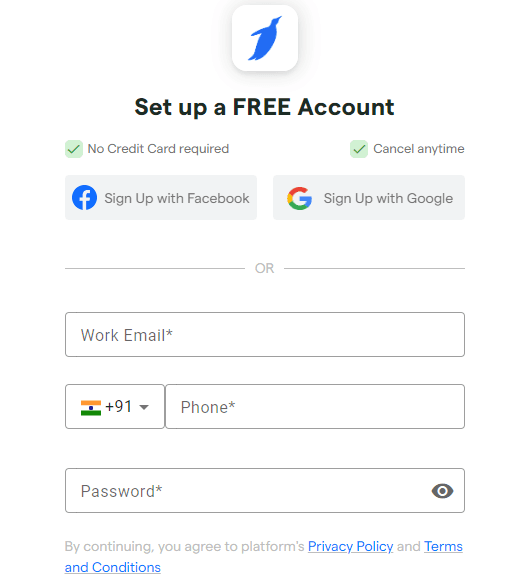
Start by signing up for accounts on BotPenguin and Twilio if you haven't already. Visit their respective websites and follow the registration process to create your accounts.
Step 2
Set up your Chatbot on BotPenguin
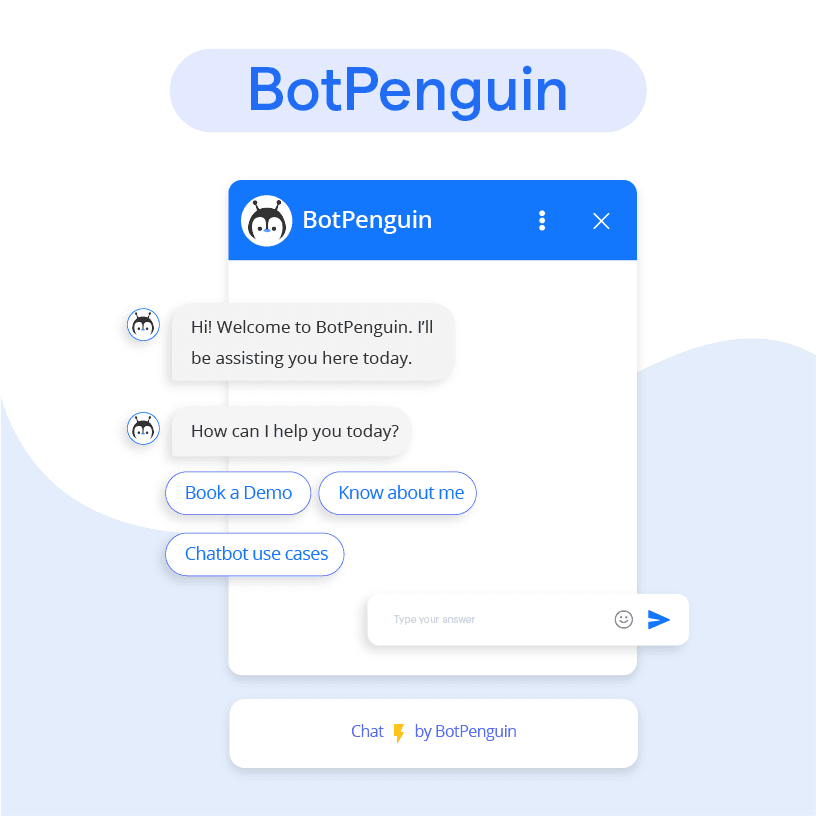
Once you have signed up for BotPenguin, log in to your account and navigate to the chatbot builder. Use the intuitive drag-and-drop interface to design and customize your chatbot.
Define conversational flows, configure responses, and add personalized elements based on your lead conversion goals.
Step 3
Integrate Twilio with BotPenguin
In your BotPenguin account, locate the integration options and select Twilio. Follow the prompts to connect your Twilio account to BotPenguin.
Provide the necessary API credentials and configure the integration settings according to your specific requirements.
Step 4
Configure Communication Channels
Once the integration is set up, configure the communication channels you want to utilize for lead conversions.
Twilio offers various options like SMS, voice calls, and more. Select the channels that align with your lead nurturing strategy and follow the instructions provided by Twilio to set them up.
Step 5
Train and Optimize your Chatbot
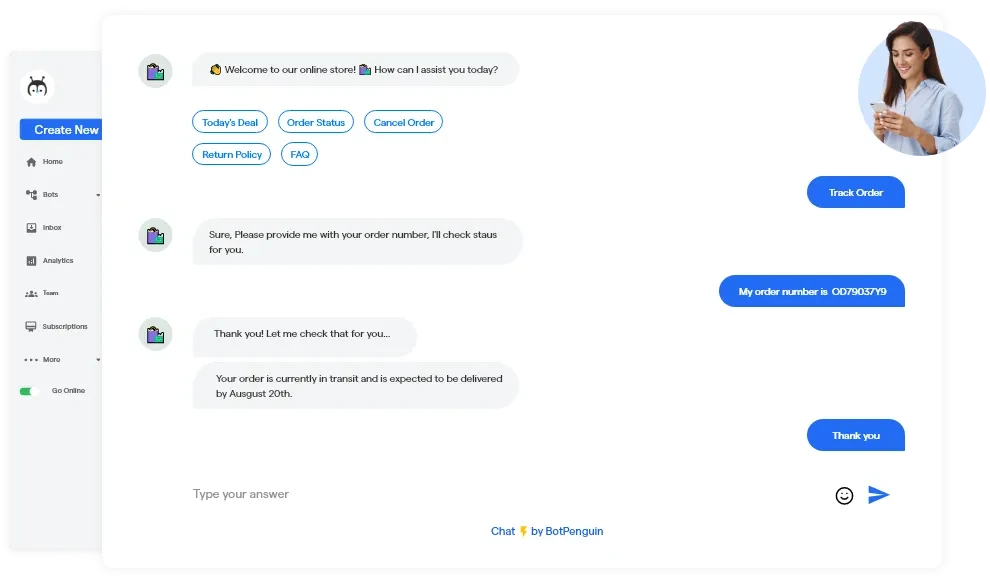
Before deploying it, train it to understand your business offerings, frequently asked questions, and customer preferences.
Test different responses, analyze user interactions, and continuously refine your chatbot's capabilities to ensure seamless communication and effective lead conversion.
Step 6
Test the Integration
Once your chatbot is trained and ready, test the integration between BotPenguin and Twilio to ensure that messages and data are being exchanged correctly.
Send test messages, trigger different scenarios, and verify if the communication channels work as expected. Identify and resolve any issues or glitches that may arise during testing.
Conclusion
BotPenguin and Twilio integration are crucial in improving customer engagement and lead conversion. However, the real power lies in integrating these two tools to use their strengths and create a seamless and powerful customer engagement system.
The chatbot integration enables personalized conversations with leads and customers. Combining BotPenguin's intelligent chatbots with Twilio's communication capabilities, businesses can deliver personalized messages, recommendations, and offers based on the lead's specific needs and preferences.
This personalization creates a more engaging and tailored experience for the lead, increasing the chances of converting them into loyal customers.
Connecting with customers is easier than ever. Integrating BotPenguin and Twilio streamlines communication for higher conversion rates. This integration automates conversations, sends personalized messages, and provides 24/7 support.
Take your business to the next level with BotPenguin and Twilio integration.
Frequently Asked Questions(FAQs)
How does the BotPenguin-Twilio integration help in lead conversions?
The chatbot integration enables you to use AI-powered chatbots from BotPenguin and Twilio's communication channels to engage leads effectively.
The chatbot provides personalized responses, while Twilio's channels like SMS and voice calls help you reach leads through their preferred methods, increasing engagement and conversion rates.
Can I automate lead nurturing with this integration?
Yes, the BotPenguin-Twilio Integration allows you to automate lead nurturing.
You can set up customized workflows and automated messages to deliver targeted content to leads, ensuring consistent and timely communication. This streamlines the lead nurturing process, increases engagement, and improves conversion rates.
How does the integration enhance customer satisfaction?
The BotPenguin-Twilio Integration ensures smooth handoffs between the chatbot and live agents.
If the chatbot cannot address a lead's query, it seamlessly transfers the conversation to a live agent through Twilio's channels. This uninterrupted communication improves customer satisfaction by providing personalized assistance and quick resolutions.
What analytical insights can I gain from this integration?
Both BotPenguin and Twilio offer comprehensive analytics and reporting features.
With this integration, you can gain insights into user interactions, conversion rates, and customer satisfaction. Analyzing this data helps you identify patterns, optimize chatbot responses, and fine-tune your lead conversion strategies for better outcomes.

